Smartphones History Timeline – Key Milestones
Did you know that there are currently more than 3.8 billion smartphone users worldwide? That’s nearly half of the global population!
Smartphones have transformed the way we live, communicate, and work. To understand the evolution of these devices, let’s explore the key milestones in the history of smartphones. From the inception of mobile communication to the revolutionary advancements in cellular networks, the rise of touchscreen innovation, and the advent of 5G, this timeline takes us through the significant moments that shaped the smartphone industry.
Key Takeaways:
- The number of smartphone users worldwide has exceeded 3.8 billion.
- Smartphones have had a profound impact on various aspects of our lives.
- The history of smartphones is marked by significant milestones and innovations.
- From mobile communication to 5G networks, smartphones have continuously evolved.
- Exploring the timeline of smartphones can provide valuable insights into their development and future possibilities.
The Inception of Mobile Communication: Pre-Smartphone Era
Before smartphones became an integral part of our lives, mobile communication had its early beginnings. In this section, we’ll explore the pre-smartphone era and the origins of mobile phones. From the first working prototype in 1973 to the approval of the first mobile phone in 1983, we’ll delve into the early stages of mobile communication and the technological advancements that laid the foundation for the future of smartphones.
During the pre-smartphone era, mobile phones were bulky and primarily focused on voice communication. The first working prototype, known as the Motorola DynaTAC 8000X, was developed in 1973 by Martin Cooper and his team at Motorola. This prototype laid the groundwork for future advancements in cell phone technology.
In 1983, the first commercial mobile phone, the Motorola DynaTAC 8000X, was approved by the FCC (Federal Communications Commission). This milestone marked the beginning of widespread mobile phone usage, albeit limited to a select number of users.
While these early mobile phones lacked the advanced features and capabilities of modern smartphones, they played a crucial role in shaping the future of mobile communication. The pre-smartphone era set the stage for the development of more compact, feature-rich devices that we now rely on for various aspects of our daily lives.
Next, let’s explore the revolutionary beginnings of mobile phones with Motorola’s groundbreaking entry and the launch of the first mobile phone in the next section.
Revolutionary Beginnings: Motorola and the First Mobile Phone
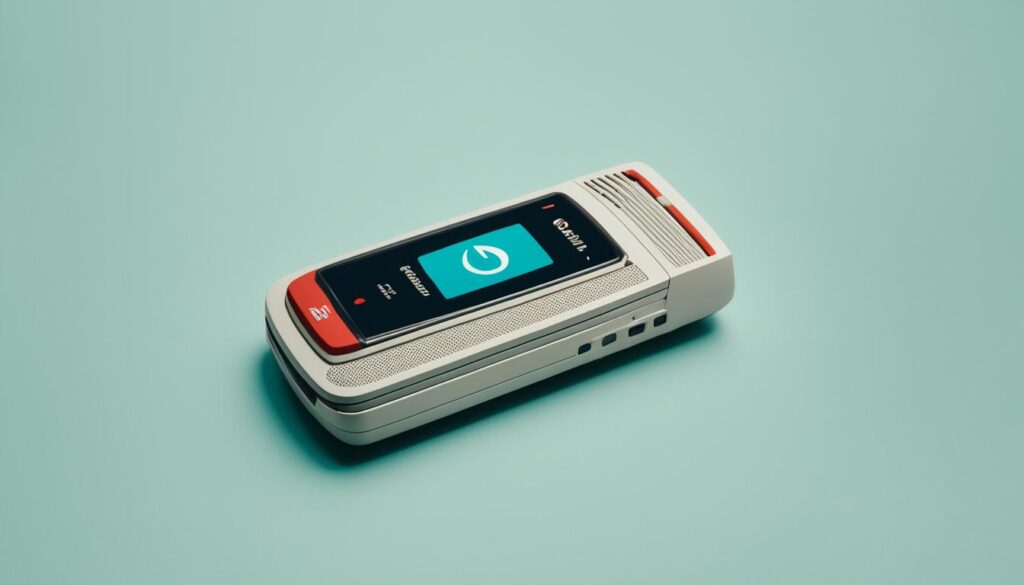
In the early development of mobile phones, Motorola played a pivotal role in shaping the industry. One of the key milestones in cell phone development was the launch of the first commercial mobile phone by Motorola in 1983. This groundbreaking device, known as the Motorola DynaTAC 8000X, marked the beginning of a new era in mobile communication.
The DynaTAC 8000X, affectionately referred to as the “brick” due to its size and weight, was an impressive feat of engineering for its time. It featured a sleek design with a long antenna and a large numeric keypad, allowing users to easily dial phone numbers. The phone’s display, although basic by modern standards, provided clear and legible characters.
Despite its hefty price tag of $3,995 (equivalent to over $10,000 in today’s currency), the DynaTAC 8000X was met with enthusiasm from consumers who were eager to embrace this cutting-edge technology. It offered a remarkable 30 minutes of talk time and a standby time of up to 8 hours, revolutionizing the way people communicated and stayed connected.
With the release of the DynaTAC 8000X, Motorola set the stage for further advancements in mobile phone technology. This device paved the way for smaller, more portable phones with enhanced features and capabilities. Motorola’s contribution to the development of the first mobile phone laid the foundation for the future of cell phones and set the industry on a trajectory of innovation and progress.
Motorola DynaTAC 8000X Specifications:
| Feature | Specification |
|---|---|
| Launch Year | 1983 |
| Dimensions | 13 x 1.75 x 3.5 in |
| Weight | 2.2 lbs |
| Battery Life | 30 minutes talk time, 8 hours standby |
| Network Compatibility | AMPS (Advanced Mobile Phone System) |
| Price | $3,995 |
From 1G to 2G: The Evolution of Cellular Networks
As mobile communication continued to advance, the evolution of cellular networks played a crucial role in enhancing the capabilities of smartphones. The transition from 1G to 2G marked a significant milestone in the historical progression of these networks.
The Launch of 1G and Ameritech’s Contribution
In the early 1980s, the first generation of cellular networks, commonly known as 1G, was introduced. Ameritech, one of the Regional Bell Operating Companies (RBOCs), played a vital role in the development and deployment of 1G technology. Their efforts led to the establishment of the first commercial cellular network in the United States in 1983. This network paved the way for mobile communication to become widely accessible and transformed the way people communicate on the go.
Transition to 2G: Advancements in Mobile Communications
The transition from 1G to 2G signaled a significant advancement in mobile communications. The introduction of 2G networks brought about several improvements, including better call quality, enhanced security features, and the ability to send text messages. This shift also paved the way for the integration of digital services and data transmission in mobile devices.
The advancements in 2G technology enabled more efficient use of the available radio frequencies, leading to increased capacity and improved network performance. This allowed users to experience faster and more reliable connections, enabling them to browse the internet, send emails, and access basic multimedia content on their smartphones.
Lithium-Ion Batteries: Powering the Next Generation of Cellular Devices
Another crucial development that accompanied the transition from 1G to 2G was the adoption of lithium-ion batteries in cellular devices. These advanced batteries provided higher energy density, longer lifespan, and better performance compared to their predecessors. Their introduction revolutionized the power capabilities of smartphones, allowing for extended usage and reduced downtime for charging.
The integration of lithium-ion batteries in mobile devices played a vital role in facilitating the growth and widespread adoption of smartphones. With longer battery life, users could rely on their devices for extended periods, making smartphones an indispensable tool in their daily lives.
| 1G | 2G |
|---|---|
| First generation of cellular networks | Second generation of cellular networks |
| Introduced in the early 1980s | Transitioned in the early 1990s |
| Analog technology | Digital technology |
| Provides basic voice calls | Enables data transmission and text messaging |
| Lower capacity and slower data transfer | Higher capacity and improved network performance |
The Dawn of Smartphones: IBM’s Groundbreaking Entry
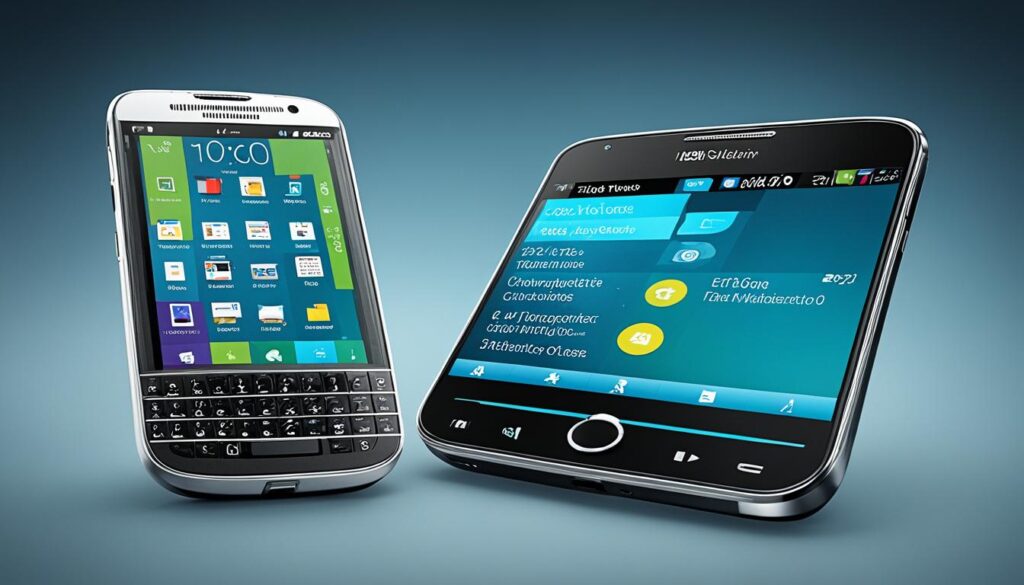
In this section, we’ll delve into the dawn of smartphones with IBM’s groundbreaking entry into the market. We’ll explore the prototype created by IBM engineer Frank Canova in 1992, which is considered the first true smartphone. We’ll discuss its features, its impact on the industry, and its eventual release to consumers.
Text Messaging and the Birth of Mobile Connectivity
Mobile connectivity took a significant leap with the introduction of text messaging. In 1992, the first text message was sent, forever changing the way we communicate using mobile devices. This innovation allowed people to send short, written messages to one another, creating a new form of instant communication.
Text messaging, also known as SMS (Short Message Service), quickly gained popularity and became an integral part of mobile phones. It enabled users to send and receive messages, making communication faster and more convenient. Whether it was sharing important information, planning meetups, or simply staying in touch, text messaging revolutionized mobile connectivity.
The ease and simplicity of text messaging made it a preferred mode of communication for people around the world. This new form of mobile connectivity transcended geographical borders and time zones, bringing people closer together.
With the birth of text messaging, mobile devices became more than just phones. They became personal communication tools that allowed individuals to stay connected, even when they were on the move.
Today, text messaging continues to play a vital role in our lives. From personal conversations to business communications, text messaging remains a reliable and efficient way to connect with others. It has evolved to include multimedia messages, group chats, and even business marketing campaigns.
As we reflect on the history of mobile phones, it is clear that text messaging was a pivotal moment in the development of mobile connectivity. Its impact can still be felt today, as we rely on text messaging to stay connected in our fast-paced, mobile-driven world.
Smartphones History Timeline: The Swift Progression Through the ’90s
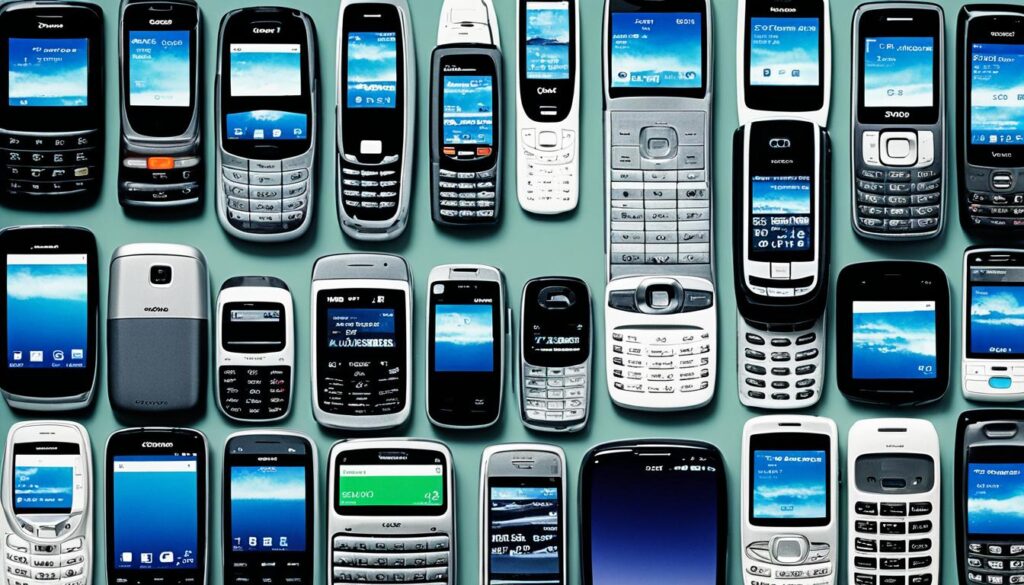
The 1990s marked a period of rapid development in the history of smartphones. In this section, we will explore two key aspects of this era that played a significant role in shaping the smartphone industry.
Ericsson’s Concept and the Coined Term “Smartphone”
During the ’90s, Ericsson paved the way for smartphone innovation with its groundbreaking concept. The company introduced the concept of a “smartphone,” a mobile device that combined the functionality of a cellular phone with advanced computing capabilities. This concept laid the foundation for the future of smartphones, leading to the convergence of communication and computing technologies.
“The introduction of the smartphone concept by Ericsson in the ’90s marked a turning point in the history of mobile devices. It sparked a new wave of innovation and set the stage for the smartphones we use today.”
Furthermore, Ericsson’s concept contributed to the popularization of the term “smartphone.” This coined term became widely recognized and used to refer to mobile phones with advanced features, capabilities, and connectivity beyond traditional cell phones.
The Advent of Mobile Gaming with Nokia’s Snake
In addition to Ericsson’s concept, the ’90s witnessed a significant milestone in the history of smartphones with the advent of mobile gaming. Nokia’s iconic game, Snake, captured the imagination of millions and revolutionized mobile entertainment.
“Nokia’s Snake game introduced a new era of mobile gaming, captivating users and demonstrating the potential of smartphones as entertainment devices. It set the stage for the vast array of gaming experiences that smartphones offer today.”
Snake, a simple yet addictive game, showcased the capabilities of smartphones beyond communication. Its popularity led to the development of more sophisticated mobile games and opened up new possibilities for entertainment on the go.
| Year | Key Milestones |
|---|---|
| 1990 | Introduction of Ericsson’s smartphone concept |
| 1992 | Debut of Nokia’s Snake game |
The Millennium’s Tech Boom: Camera Phones and 3G Introductions
The turn of the millennium brought significant advancements to smartphones. In this section, we’ll focus on the introduction of camera phones and the launch of 3G networks.
Camera phones revolutionized photography by allowing users to capture moments on the go. The first front-facing camera phone, the Kyocera VP-210, was released in 1999, enabling individuals to take self-portraits and engage in video calls. This innovation marked a new era in communication and self-expression.
With the commercial availability of camera phones, smartphones became more than just communication devices. People could now capture and share memories effortlessly, making photography a ubiquitous part of everyday life.
Simultaneously, the launch of 3G networks brought faster mobile internet speeds, transforming how we access information and communicate online. The 3G network allowed users to browse the internet, send emails, and stream media, expanding the possibilities of what a smartphone could offer.
Touchscreen Innovation and the Rise of iPhone’s Dominance
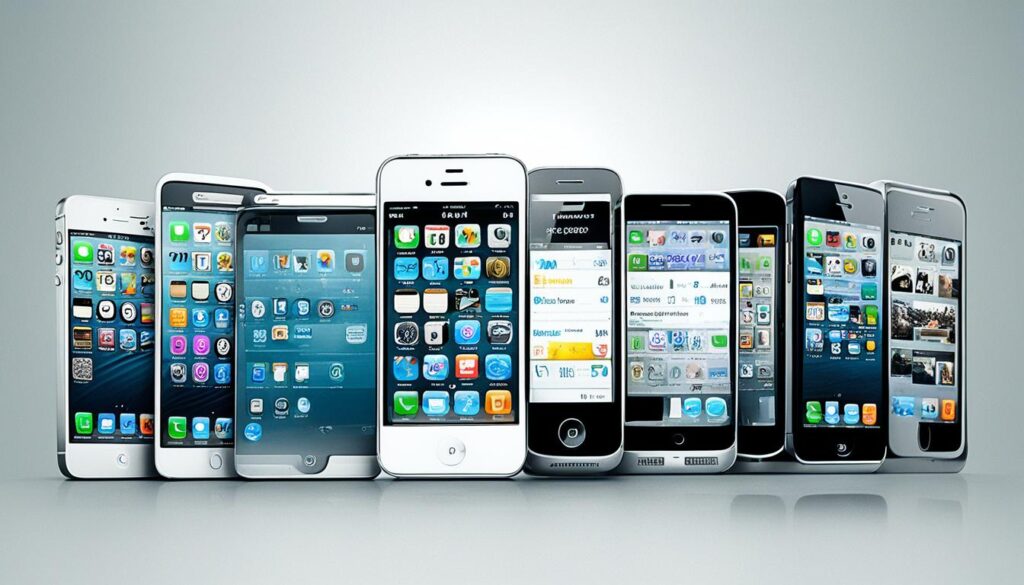
Touchscreen innovation revolutionized the smartphone industry. The introduction of touchscreens as the primary method of interaction with smartphones brought about a major shift in user experience and opened up new possibilities for functionality.
One of the key players in driving this innovation was Apple with its iconic iPhone. Launched in 2007, the iPhone quickly rose to dominance and set the standard for touchscreen smartphones. With its intuitive interface and multi-touch capabilities, the iPhone transformed the way people interacted with their devices, making it easier to navigate, browse the web, and perform various tasks.
The rise of the iPhone also spurred competition among other smartphone manufacturers, leading to further advancements in touchscreen technology. Companies such as Samsung, Google, and LG followed suit by integrating touchscreens into their devices, pushing the boundaries of what was possible with this innovative interface.
Today, touchscreen smartphones have become the norm, with nearly all smartphones featuring this technology. From simple taps and swipes to complex gestures and fingerprint recognition, touchscreens have become an integral part of our daily lives, enabling us to communicate, work, and entertain ourselves on the go.
The combined efforts of touchscreen innovation and the rise of the iPhone have not only revolutionized the smartphone industry but also paved the way for other touchscreen devices like tablets and smartwatches. As technology continues to evolve, we can expect further advancements in touchscreens, enhancing our interaction with these devices and driving new possibilities in the future.
Android Joins the Smartphone Arena: A New Era of Open-Source OS
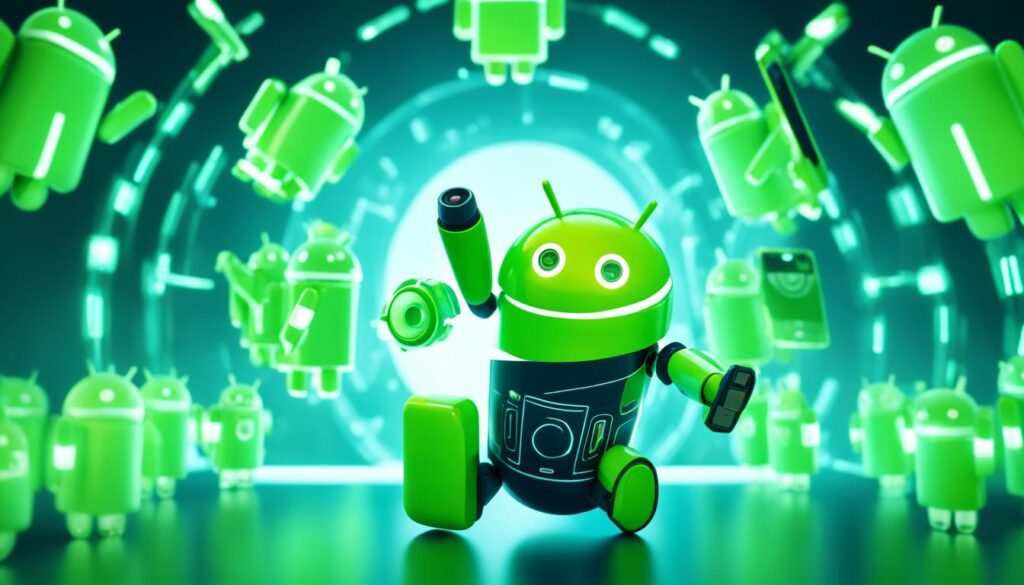
In the rapidly evolving world of smartphones, the entry of Android brought about a new era of open-source operating systems. With its debut in the early 2000s, Android quickly gained popularity and revolutionized the smartphone industry.
The Debut of the HTC Dream/T-Mobile G1
One of the key milestones in Android’s journey was the release of the HTC Dream, also known as the T-Mobile G1, in 2008. This groundbreaking device marked the first Android-powered mobile phone to hit the market. With its innovative features and user-friendly interface, the HTC Dream/T-Mobile G1 set the stage for the Android revolution.
The Significance of Google’s Android 1.0 Release
Accompanying the HTC Dream/T-Mobile G1 launch was the release of Google’s Android 1.0 operating system. This marked a significant milestone as it introduced an open-source OS to the smartphone market, enabling developers to create custom applications and making Android devices highly adaptable to user preferences. The release of Android 1.0 laid the foundation for the future of Android and its continuous growth in the smartphone industry.
| Key Points |
|---|
| The HTC Dream/T-Mobile G1 was the first Android-powered mobile phone. |
| Google’s Android 1.0 introduced an open-source OS to the smartphone market. |
| Android’s entry brought about a new era of highly customizable mobile devices. |
| The HTC Dream/T-Mobile G1 and Android 1.0 set the stage for Android’s rapid growth and popularity. |
4G Networks and the Surge of Mobile Internet Speeds
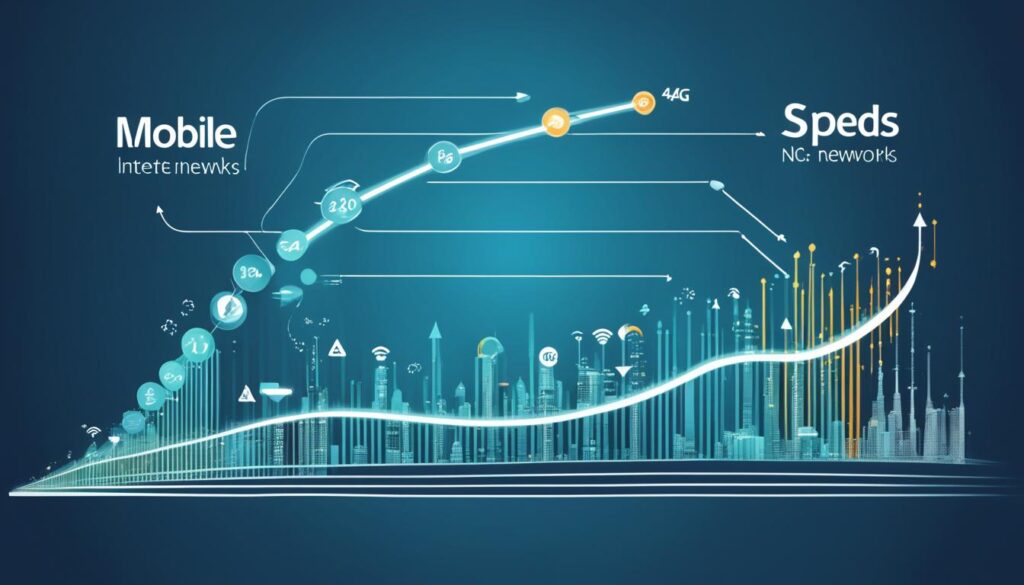
The introduction of 4G networks marked a significant leap in mobile internet speeds. With 4G, users experienced faster data transmission, enabling seamless streaming, rapid downloads, and enhanced browsing capabilities. This advancement revolutionized the way we connect and interact with the digital world on our smartphones and other mobile devices.
4G networks offered download speeds that were several times faster than their predecessors, providing a more efficient and enjoyable user experience. Tasks that were once time-consuming, such as downloading large files, streaming high-definition videos, and online gaming, became effortless and instantaneous.
The surge of mobile internet speeds brought numerous benefits to both individuals and businesses. Users could stay connected wherever they went, accessing information, communicating in real-time, and utilizing a wide range of mobile apps that depend on high-speed internet connectivity.
Businesses also capitalized on the opportunities presented by 4G networks. With faster mobile internet speeds, companies could enhance their online presence, develop innovative mobile applications, and provide seamless customer experiences. Industries such as e-commerce, media, transportation, and healthcare witnessed significant transformations, fueling economic growth and technological advancements.
Furthermore, the surge of mobile internet speeds paved the way for emerging technologies such as video streaming services, remote work and collaboration tools, and the Internet of Things (IoT). These developments revolutionized various aspects of our lives, from entertainment and communication to healthcare and transportation.
The impact of 4G networks on mobile connectivity cannot be overstated. As we continue to rely on smartphones and other mobile devices, it is crucial to acknowledge and appreciate the advancements brought about by 4G networks in shaping our digitally connected world.
The Advent of 5G and the Future of Connectivity

The advent of 5G networks promises to revolutionize connectivity. With its faster speeds, lower latency, and increased capacity, 5G has the potential to enable innovative technologies and transform various industries. This section will explore the introduction of 5G and its implications for the future of connectivity.
5G networks are expected to provide significantly faster download and upload speeds compared to previous generations. This means that tasks that currently take minutes, such as downloading large files or streaming high-quality videos, can be completed in a matter of seconds. The increased speed and lower latency of 5G will also enhance real-time applications such as video conferencing, online gaming, and virtual reality experiences.
Furthermore, 5G technology has the potential to support the massive growth of Internet of Things (IoT) devices. With its low latency and ability to connect a large number of devices simultaneously, 5G networks will enable seamless communication between devices, paving the way for more advanced smart homes, smart cities, and interconnected systems.
One of the most exciting prospects of 5G is its impact on autonomous vehicles. The high-speed, low-latency connectivity provided by 5G networks will enable real-time communication between vehicles, infrastructure, and pedestrians, creating safer and more efficient transportation systems. With reduced latency, autonomous vehicles will be able to make split-second decisions based on real-time data, revolutionizing the way we travel.
5G also has the potential to revolutionize industries such as healthcare, manufacturing, and entertainment. In healthcare, the high-speed connectivity of 5G will enable remote surgeries, real-time patient monitoring, and enhanced telemedicine capabilities. In manufacturing, 5G networks will facilitate seamless communication between machines, leading to increased efficiency and productivity. And in the entertainment industry, 5G will enable immersive experiences such as augmented reality and virtual reality on a mass scale.
“The advent of 5G networks marks a new era of connectivity, where faster speeds and lower latency will unlock endless possibilities for innovation and technological advancement.”
In summary, the advent of 5G networks holds tremendous potential for the future of connectivity. With its faster speeds, lower latency, and ability to support a massive number of devices, 5G will enable groundbreaking technologies and transform various industries. As we embrace the era of 5G, we can look forward to a more connected, intelligent, and innovative future.
Text Message Marketing: Transforming Business Communications
The Rise of Personalized SMS Campaigns
Text message marketing has revolutionized the way businesses communicate with their customers. Through personalized SMS campaigns, businesses can deliver targeted and relevant messages directly to their audience’s smartphones. This level of personalization allows companies to engage customers on a one-to-one basis, enhancing the effectiveness of their marketing efforts.
With personalized SMS campaigns, businesses can segment their customer base and tailor messages based on demographics, purchasing history, or specific interests. By sending personalized offers, recommendations, or event updates, businesses can create a more meaningful connection with their customers, increasing response rates and driving conversions.
Embracing Two-way Communication for Business Growth
In addition to personalized SMS campaigns, businesses are now embracing two-way communication to foster better relationships with their customers. By providing a channel for customers to easily respond, ask questions, or provide feedback via text messages, businesses can create a more interactive and customer-centric experience.
Two-way communication allows businesses to address customer inquiries promptly, provide real-time support, and gather valuable insights that can inform their product development or marketing strategies. By engaging in meaningful conversations with their customers, businesses can build trust, loyalty, and ultimately drive business growth.
